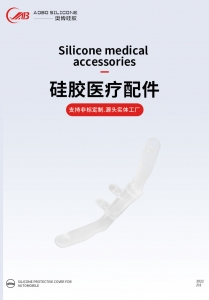How to make silicone hoses last longer?
Is your silicone hose prone to damage? Learn these tricks to make it durable and save money
Silicone hoses are widely used in household, food, medical, and industrial fields because they are resistant to high and low temperatures (-60℃ to 200℃), chemically corrosion-resistant, flexible, non-toxic, and odorless (meeting food-grade standards). However, many people find that “they break before reaching their expected service life”. In fact, using the correct methods can make them more durable.
Silicone hoses are made of siloxane polymers, and some are translucent, making it easy to observe the fluid inside the tube. The food industry uses them to transport raw materials to ensure safety; medical equipment relies on them for connections to maintain hygiene; industrial machines use them as pipelines to withstand high temperatures and pressures; and household water heaters and water pipes also cannot do without them.

However, after long-term use, silicone hoses are prone to aging and clogging. Aging is mostly caused by long-term exposure to sunlight or contact with strong acids and alkalis; clogging is due to the accumulation of dirt and sediments inside the tube. To address aging, avoid direct sunlight (use a sunshade cloth to cover), keep away from highly corrosive substances, and regularly inspect the surface. If there are cracks or discoloration, replace them in time. To solve clogging, regularly clean with warm water and a soft brush, or use diluted vinegar water/baking soda water to dissolve oil stains. For stubborn clogs, directly replace the hose.
To extend their service life, do not over-twist or stretch them during installation; keep the hoses in a natural state, and ensure the connections are well-sealed to prevent leaks. Regular maintenance is also crucial: straighten them to check for damage, rinse the inner wall with clean water to keep it unobstructed, and apply lubricant at the interfaces to prevent rust and aging. When in use, do not exceed their pressure and temperature bearing capacity. In extreme environments, choose hoses of higher specifications or use multiple hoses in parallel to distribute the load. When storing, place them in a cool and dry place, avoiding exposure to sunlight and moisture; for long-term storage, clean and dry them, and use a reel/stand to roll them up gently without stretching or folding them into sharp angles.
Whether you use silicone hoses in household, food, medical, or industrial scenarios and want them to be more durable, click on the online customer service or call directly, tell us your usage needs, and we will provide you with free customized adaptation tips and selection suggestions to make silicone products last longer and more worry-free~
